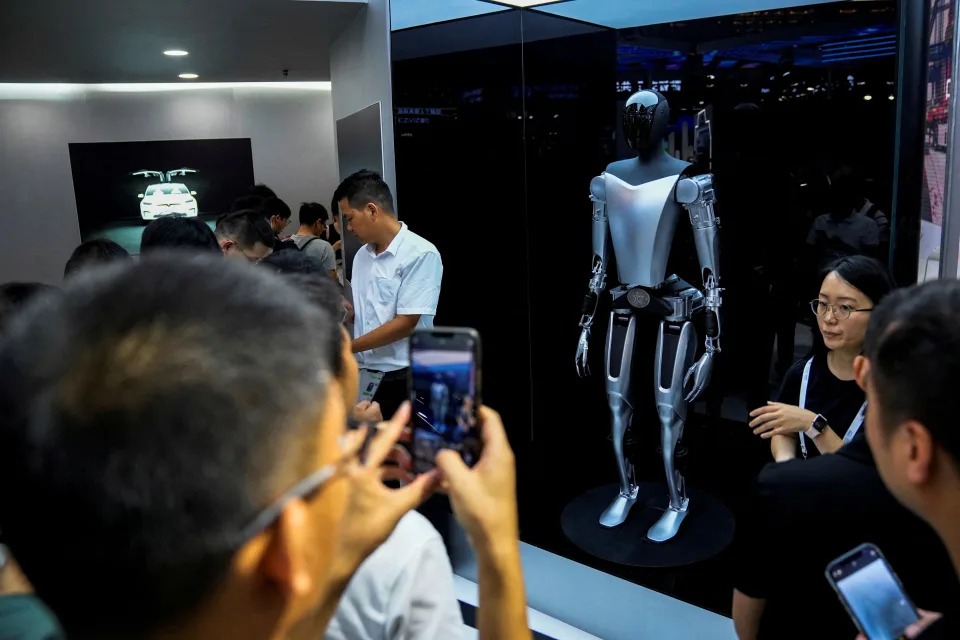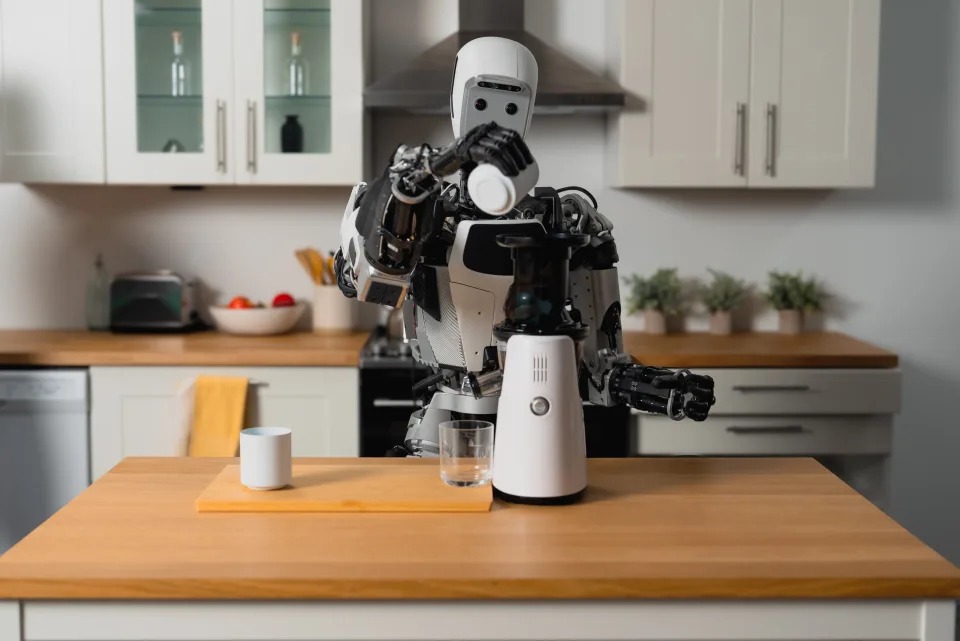When the Department of Defense launched its robotics challenge in 2015, the goal was to create ground robots that could assist in disaster recovery, guided by human operators. Each robot was tasked with completing eight activities, including driving a car and climbing stairs, within an hour.
Nearly ten years later, advancements in generative AI are rapidly enhancing this learning process, enabling human-like machines to acquire new skills in real-time.
“The ultimate goal for us is zero-shot learning, where a robot can observe a task and then replicate it just as a human would,” said Jeff Cardenas, co-founder of Apptronik, a robotics company based in Austin.
This vision is gradually becoming a reality. Last week, Figure, a company backed by OpenAI, introduced the latest version of its humanoid robot. According to the company, this robot features a vision language model that allows it to visually reason and self-correct its behavior.
In June, Tesla (TSLA) showcased an updated version of its Optimus robot at Tesla’s Investor Day, demonstrating the robot navigating a factory floor. CEO Elon Musk emphasized the robot’s potential, suggesting it could help boost the company’s market cap to $25 trillion.

For years, robots have been used in factories and warehouses to improve efficiency, but these machines have primarily been limited to moving from one point to another and performing a limited set of tasks.
Humanoid robots that can adapt to existing environments have long been considered the ultimate test—if they can operate alongside humans in spaces designed for people.
“If you want a versatile robot, it’s crucial that the robot can be integrated into our environment without requiring major changes,” said Cardenas. “Currently, the cost of integrating a robot into a new workflow can be three to six times the price of the robot itself.”
Nvidia’s Humanoid Vision Nvidia (NVDA) is at the forefront of humanoid development, leveraging an ecosystem specifically designed for these robots. This system combines powerful chips that process data rapidly with the omniverse, a digital environment where robots can be trained for real-world tasks.
Earlier this year, Nvidia announced the creation of AI foundation models. More recently, the company introduced “NIM Microservices,” a visual training platform that allows generative AI models to interpret their surroundings in 3D.
“Previously, when developing an AI model for a specific task, we had to train it with data tailored to that task. If the model needed to do something different, it had to be retrained,” explained Deepu Talla, Nvidia’s vice president of Robotics and Edge Computing.
Nvidia’s ecosystem now allows robots to be trained using text, speech input, and live demonstrations.

These advancements have accelerated progress at Apptronik, one of the robotics companies collaborating with Nvidia. The company recently achieved a significant milestone at its Austin headquarters, where its humanoid robot, Apollo, autonomously performed tasks learned through visual training. The robot was observed picking up a pair of socks and a hat and placing them into a box—a task that previously required thousands of hours of training but now took only 10 hours, according to the company.
“If we create large datasets of humans performing tasks in these environments, and have robots with human-like morphology, we can develop robots capable of performing a wide range of tasks over time,” said Cardenas.
This potential has attracted unprecedented investment. In the first half of 2024, humanoid robotics companies raised nearly $793 million, according to CB Insights.
Goldman Sachs predicts the android market could reach $38 billion by 2035.
“If you have a robot that can do anything a human can, it fundamentally alters the economy,” said Sam Korus, director of Research, Autonomous Technology, and Robotics at Ark Invest. “The constraint on human labor would essentially disappear.”
While tech leaders caution that an increase in humanoids won’t necessarily result in fewer human jobs, a Goldman Sachs report estimates that these machines could replace 5% to 15% of current jobs in car manufacturing and high-risk fields like disaster rescue and nuclear reactor operations. The report projects global demand for these robots to reach between 1.1 million and 3.5 million units.
Humanoids are already starting to make their way into practical use. Musk has mentioned that two Optimus robots are currently operational at Tesla’s Fremont factory, with plans to deploy a few thousand by next year. Amazon (AMZN) is collaborating with Oregon-based Agility to utilize its Digit robot at a testing facility, while Apptronik is working with Mercedes-Benz to integrate Apollo into its manufacturing process.
Talla envisions a future where humanoids extend beyond industrial applications. He believes androids could become as common as smartphones and electric vehicles, provided companies can scale production and reduce costs to around $10,000 per unit.
“For humanoids to be widely adopted, they need to be economical, intelligent, and safe,” Talla said. “If those three criteria are met, there’s no reason why every household shouldn’t have at least one humanoid or more.”
